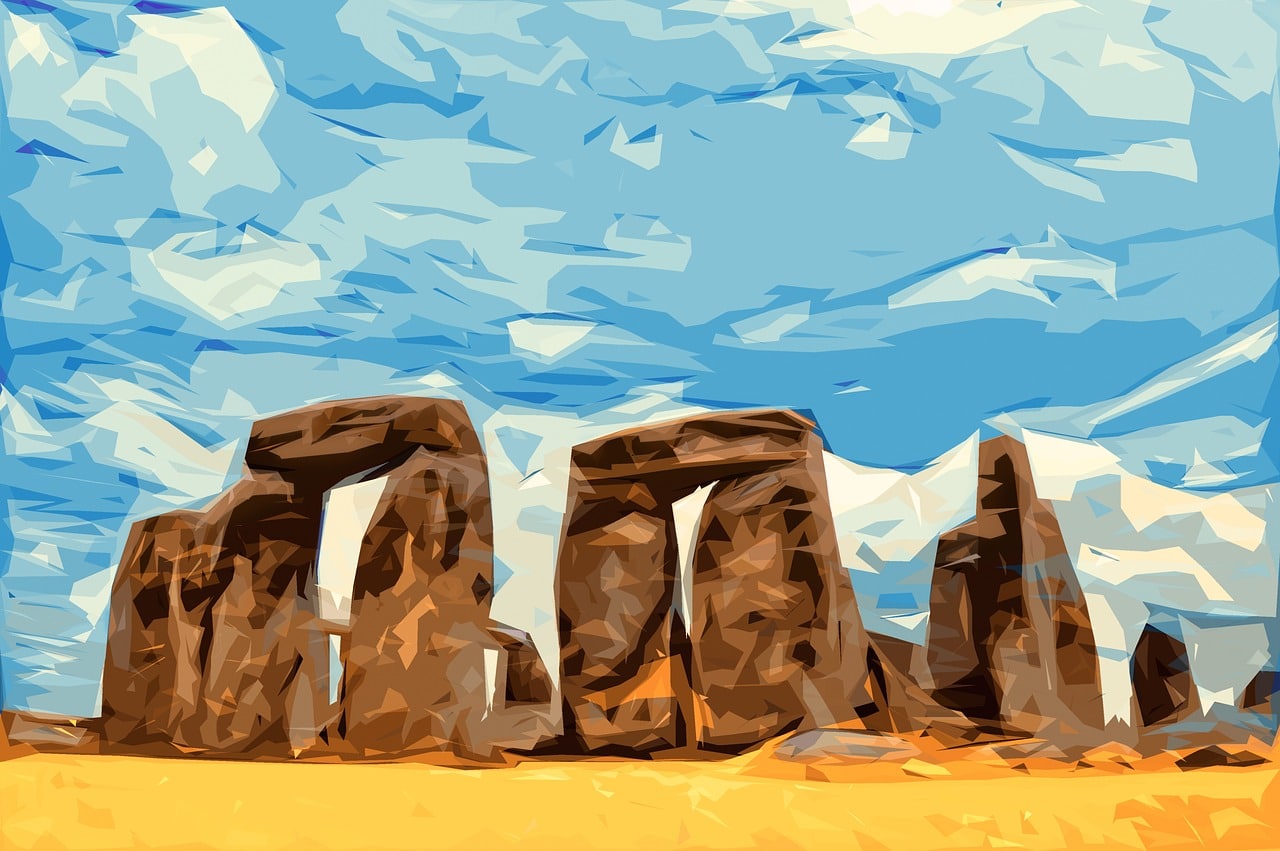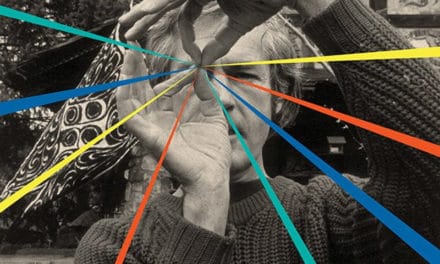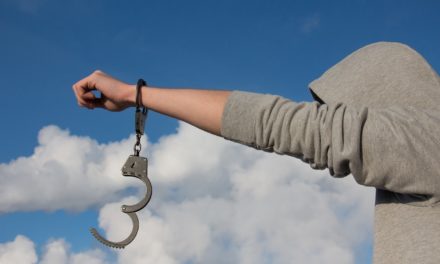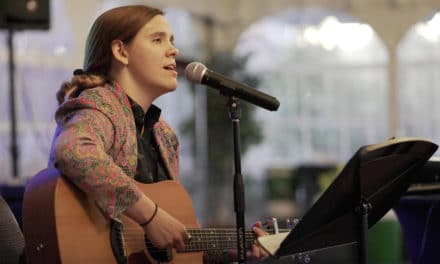All throughout time, humans have sought ways to gather together, celebrate sacred occasions, and alter consciousness in some way. While some hold the opinion that psychedelics should never be used at festivals, or should only be used in a native ceremonial context, or perhaps be avoided altogether, the truth is that it is a fundamental human drive to seek transcendent experiences with a tribe, and it will always be part of the human story. If we accept that fact, then the question remains: what is the best way to go about this to reduce harm and encourage the benefits, particularly for Westerners who have not had a formal psychedelic tradition since the days of the Eleusinian Mysteries?
Shedding light on this controversial topic is Julian Vayne, author of Getting Higher: The Manual of Psychedelic Ceremony. I spoke with Julian from his residence in the UK about why people take psychedelics at festivals, and what we can do to expand access and encourage positive experiences.
Thanks so much for speaking with us again, Julian. In Getting Higher you touch on psychedelics at festivals. When you look at things like burn events, raves, psytrance events, or transformational festivals in general, it looks in some ways like an emerging Western psychedelic tradition. What’s your take on this?
That’s a good question. I do touch on festivals in Getting Higher and I think I say something along the lines of ‘this is very interesting and possibly the optimum environment to take entheogens.’ The reason for this is that a festival is one of the fundamental experiences that humans have created throughout history: we gather together, we change our states of awareness, we interact, we have music and food and sex and whatever else is going on for that community… that’s what we do.
Humans gather together and festival; that’s our basic process. If you look at the landscape in say, Northwestern Europe, and you look at festival sites like Avebury and Stonehenge, you can see that that’s what these places undoubtedly were- there is plenty of archaeological evidence to support that. Then we go to other cultures where entheogenic communities still thrive, such as the Huichol in Mexico, and we can see that they do exactly this: they have festivals, they have peyote ceremonies in which large numbers, essentially the whole community, are involved. This doesn’t mean it’s not sacred, and it doesn’t mean that it’s not special. It’s the basic kind of template for what we do with our entheogenic experience.
In terms of the practicalities, I’m really pleased to see that in the course of not that many years, Western culture created the rock music festival to hold the experience of LSD, and then the rave to hold the experience of MDMA, and now we’ve gotten to the point where we have some very well-organized festivals with harm mitigation for people who are having difficulties, places where they can be supported rather than just tranquilized or hauled off to the hospital. So we have care that’s coming to that story, like the “chillout room” in rave clubs… this is an intelligent way of doing this stuff. There will always be difficulties and problems and things that go wrong- hey, that’s life. But as an emerging environment for people to take entheogens, they’re great.
I can’t help but think of what Terence McKenna called “the archaic revival”: this emergent fundamental human need for ritual and ecstasy and communal immediacy.
Of course- we’re social animals, and so whilst we can do tripping on our own, and there’s a great value in that, there is tremendous value in tripping together. If we can do that in good ways and come together in groups, I think we end up working out a lot of really fundamental things that inform our relationships with others. You can introspect on those things all you like, and in a psychedelic state obviously you can get really interesting points of understanding, but to actually be in the living presence of other people, ideally people that you love and care for and have a good feeling with- that is where the social transformation really happens. This collective experience can touch us very, very deeply, because we are social animals. So collective entheogens, this “archaic revival,” is an essential part of the process, in my view.
In my experience, it grants a real and visceral sense of belonging. I think that a lot of people consider themselves outcasts, because they don’t resonate with default society. I know for me, I felt that way quite a bit as a younger man, and attending my first burn event, a regional burn in Texas called Burning Flipside, I felt this incredible sense of belonging. Yes, I’m an outsider and I don’t belong to the default culture, but I do belong to this outsider culture. I felt that visceral sense of immediacy shared with other people on the dancefloor and just through the rigors of camping in nature for a week. It was profoundly transformative. And a sense of belonging is immensely healing, because addiction and depression often occur with people who don’t experience any kind of belonging. It’s also been said that loneliness is the leading predictor in death, more than any other factor. So these festivals bringing people together may seem merely hedonistic, but they can be profoundly healing as well.
Anyone who’s familiar with the iconic Rat Park Experiment knows that when you put a creature in a box on its own, it gets very sad and will self-medicate with things that are damaging for it. Yes, it’s very much about this process of coming together, and I think that is what’s interesting about this whole festival movement. What I hope will be the next step for it is a joining up of other communities. I would like to see increasing diversity. I’m very interested in the work of people who are taking the concept of entheogenic healing out to communities that would not typically be at the burn.
So I think it’s incumbent on us as we feel ourselves coming together to say “how can we share this with others as well?” For those in closed spaces, how can we propagate this powerful and useful message for our species? This is important stuff. The fact is that we’ve abandoned the psychedelic gnosis in our white Western European culture for 2,000 years. In that time has arisen a society which has brought the planet to the edge of possible disaster for every species. And so I think reconnecting with this gnosis could be massively healing for the planet. As Terence Mckenna said, not a moment too soon.
We’re rebuilding a decentralized Eleusis.
With any luck.
I’ve heard quite a few people say that taking a substance as strong as these psychedelics at a festival where you don’t know what’s going to happen and you don’t have any control over your environment sounds like the worst environment in which to do it. I see that perspective, but I also agree with everything you’ve said, about how it can also be one of the best ways. So what’s really the differentiator there? Is it maybe the cultural container in which it happens, and how educated and prepared the person is for the experience?
One of the things to think about in a situation like this, particularly in regards to how much to take, is the notion of “baseline.” People will often mistakenly imagine baseline to be a continuous line, and it’s not like that at all. When you’re hugely stimulated because you’re at a festival- perhaps it’s the first festival you’ve ever been to- if you are considering taking a substance, then maybe take half or quarter the dose you would normally take, simply because your baseline is already high. It’s easier to add more than it is to take away too much, and you’ll just get more out of it. So it’s all about intelligent use. If you’re at a festival and then you’re’ going to take part in a ceremonial space within that, a slightly more formal or secluded space, you’re going into a tent and there’s going to be a space where it is safe and perhaps legal to do a certain ritual, then perhaps you can go deeper. But in general, at a festival you will need less. Try less- you can always add more later; that would be my advice.
I think, again, we have to bring it back to personal responsibility. It’s not necessarily a bad idea to take entheogens at festivals, but it’s not necessarily a good idea, either. It depends on this whole realm of factors, and ultimately on the individual and their own intuitive sense: where they are in their life, the timing, etc.
This is what we have to do, because the fact is that these substances are not going away, and they are very powerful. We now know that in the right context, they are deeply transformative and healing for us, so we should learn to use them well. We need to educate ourselves and other people and share the knowledge and experience that we have. We have to do this as openly as possible and be accessible to as many communities and voices as we can. These are beautiful and fascinating substances, and to operate them well isn’t all that complicated. So something like saying “remember baseline is variable, if you’re already stimulated take less,” now that’s an easy thing to remember; it’s not complicated stuff. People can learn to work with these substances and benefit from them in a variety of really good ways, but only if we share knowledge. However imperfectly, that’s what I try to do with the book. This is not the only answer; this is just me saying ‘look at my experiences and the experiences of the people I work with; I hope this helps’ so that people can engage with these medicines in good, powerful and beautiful ways.
We are very grateful to Julian for sharing his insights with us. You can read our first interview with Julian on psychedelic healing here, and our second interview about DIY psychedelic ceremony here. Check out Julian’s new book Getting Higher: The Manual of Psychedelic Ceremony here.











